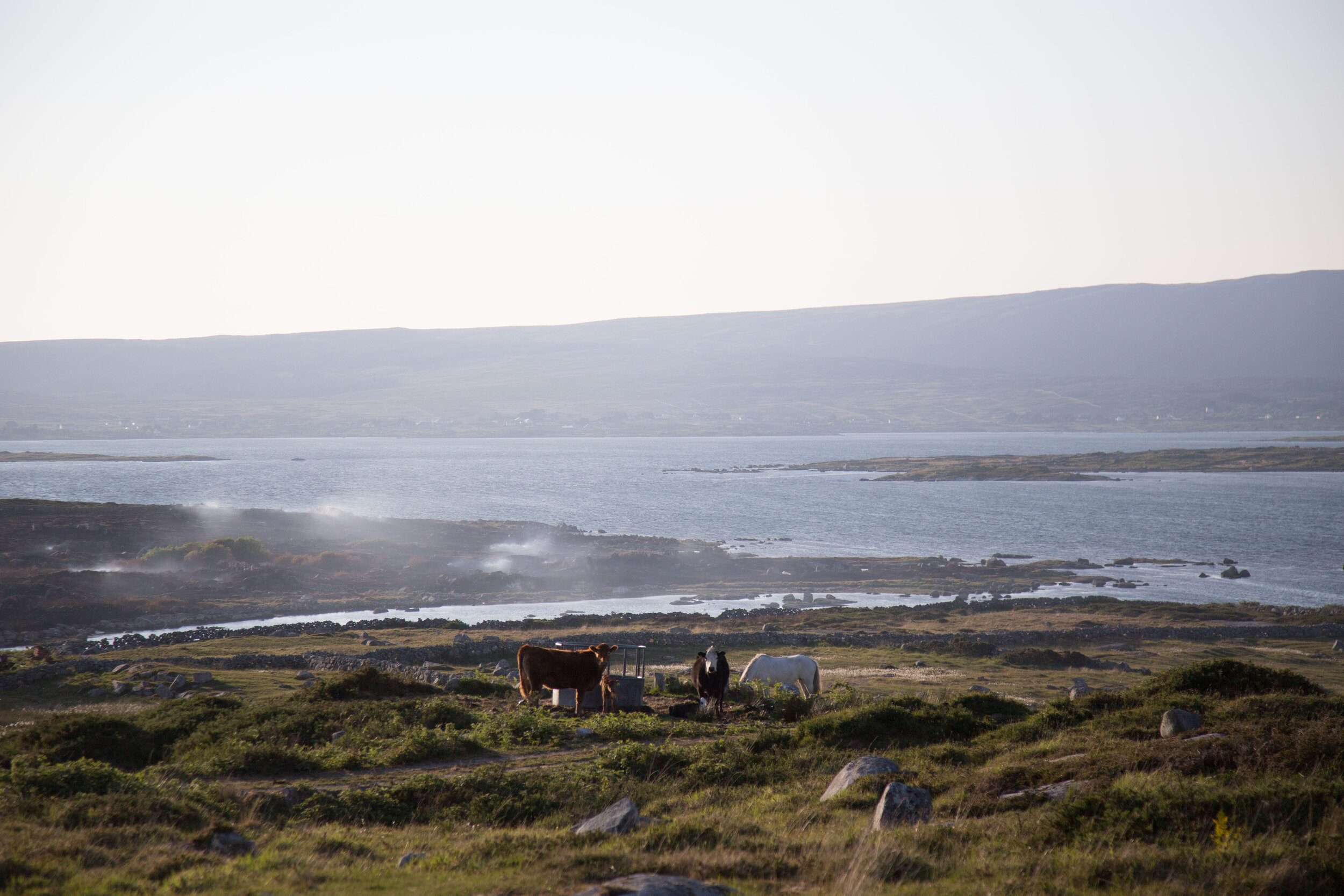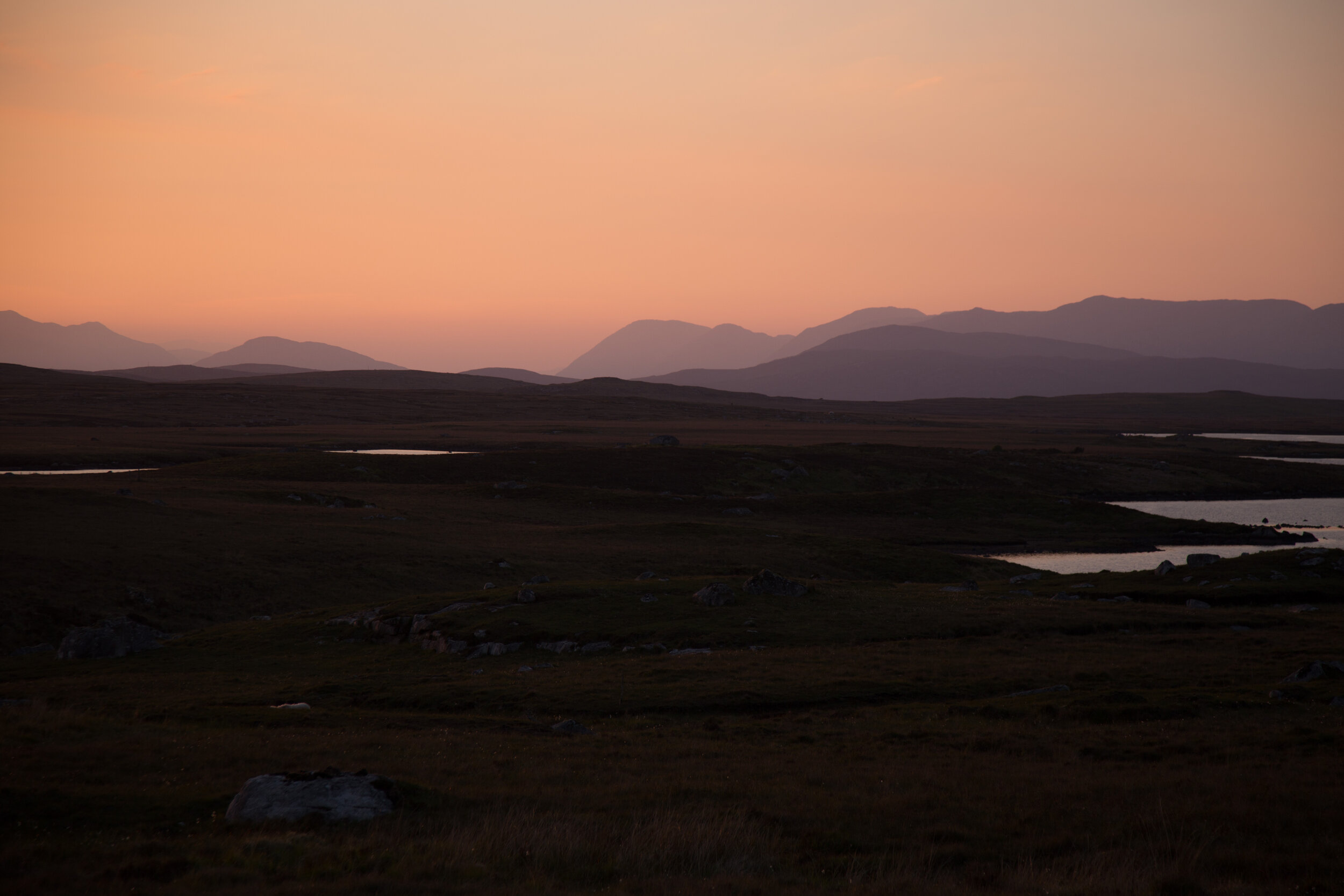WHY IT MATTERS: Ireland's gorse fires.
Every summer we see wildfires blazes for days on end, on Irish hillsides, forests, bogs, and mountains. These fires destroy everything in their path. What causes these fires? Why are they started? What damage do they cause? And what can we do to help prevent them?
Firstly, remind me, what is gorse?
Depending on where in Ireland you live or visit you might call this plant by any number of names - including gorse, furze, or whin.
Gorse (Ulex europaeus) is a hardy plant that grows vigorously in a wide variety of settings, particularly favoring dry and sandy soils. It has prickly green thorns and beautiful, yellow, coconut-smelling flowers.
The branches of gorse are particularly flexible. This flexibility allows it to grow unaffected by strong winds on exposed hillsides. Blankets of gorse create great ground cover for nesting birds and animals who often seek refuge in its thorny understory. However, when gorse is allowed to dominate whole areas this can become a problem for biodiversity as it smothers opportunities for more delicate flora to thrive.
Snow covered gorse in Winter
A typical Gorse hillside in full bloom.
How do gorse wild fires begin?
Every year we hear government ministers condemn reckless behaviour. It can feel like the implication here is that daytrippers, campers, and hikers are to blame. However, that is not the complete story. There is surprisingly little conversation about the starting points of these wildfires. Did you know, for example, that many of Ireland’s wildfires have their origins in fires deliberately started by farmers?
Wait, what?! People are deliberately setting wildfires?
Not exactly. Yes and no. There is a tradition or a practice whereby farmers set gorse bushes on fire to try to clear their farmland of this hardy evergreen shrub. These fires then get out of hand and spread with devastating consequences for delicately balanced habitats.
So, tell me more about this tradition of setting gorse shrubs on fire.
In years gone by farmers used ground-up gorse plants to supplement feed for cattle. Today that labour intensive practice is no longer carried out. Gorse is a prickly dense shrub. Digging and cutting this shrub is hard work, particularly across large areas of land. Because the plant is so difficult to clear, farmers sometimes burn gorse as the fastest way to remove it.
So then are farmers at fault?
Not all farmers. Many in Ireland point the finger of blame in the direction of policies rather than the actions of individual farmers. It appears that the criteria for farmers to qualify for farm subsidies and payments are inadvertently encouraging the burning of gorse and important scrub habitats.
One of the reasons often put forward by farmers for the clearance and burning of gorse is the need to maintain their land as a “utilisable agricultural area” in order to qualify for farm subsidy payments. (In this case the Direct Payments through Pillar 1 of the CAP (Common Agricultural Policy). Currently, these payments are only payable on what is seen to be ‘agricultural land’. So to avoid penalties and losing farm payments, areas of scrub and gorse, vital for biodiversity, are being erased from farmlands.
“Did you know, for example, that many of Ireland’s wildfires have their origins in fires deliberately started by farmers?”
An exploded aerosol sparkles in the ashes.
Grass scraw burnt to the ground.
What harm is being caused by these fires?
To the casual observer, the burning of our bogs and uplands may not appear to be a big problem. These areas appear quite barren and unproductive anyway you may think. Unfortunately, this mindset is part of our problem.
In Ireland, we have placed too much value on producing monocultural green grass to feed cows, and not enough value or protection has been given to the rich habitats of our bogs, wetlands, and uplands - all areas poorly suited to intensive agriculture.
It is a big mistake to think of our bogs, wetlands and uplands as barren landscapes with little value. Irish bogs make up a large percentage of Irelands Special Areas of Conservation. Bogs have high levels of diverse and varied plant species, as well as some rare and endangered animals such as the Hen Harrier, Curlew, Short-Eared Owl.
“Bogs have high levels of diverse and varied plant species, as well as some rare and endangered animals such as the Hen Harrier, Curlew, Short-Eared Owl.”
A small road creates a fire break.
Surely there is a law that could be brought in to protect these species?
That’s the depressing part. We already have a law. To protect nesting birds and avoid out-of-control fires during the driest times of the year, the Irish Wildlife Act already prohibits the burning or destruction of gorse between 1 March and 31 August. This appears to be ineffective especially as it is not enforced. Year after year, gorse fires destroy thousands of hectares of important Irish habitat during this closed season.
But, I heard that the gorse reseeds quickly after a fire anyway?
Yes, this is true and this is also a part of the problem. Gorse regenerates prolifically from the seed bank after a fire. As a result, the burning of gorse does not give long-term control, and may actually encourage stronger regrowth of the shrub. Gorse grows back stronger after fire. Landowners then become locked into a seasonal cycle of burning and regrowth. Wildlife is not given a chance to recover.
But it’s not just bogs that are at risk of wildfires, right?
Correct. Some of the most recent, devasting wildfires have not been in our forests. Possibly the most devastating recent fire was in April 2021 when wildfires destroyed parts of the oak forests of Killarney National Park.
In May 2017 a large, out-of-control wildfire ripped through the hills of Connemara, County Galway. Over 1,500 hectares of Sitka spruce plantation forestry and 2,000 hectares of bogland were destroyed in that fire. At that time NASA reported that the fire could be seen from space and referred to them as ‘Gorse Wildfires’.
At the same time, another wildfire burned on a series of interconnecting islands called Lettermore, Gorumna and Lettermullan. As these fires came under control, or burnt themselves out, we decided to visit the area to see what I could document. The photographs you see here capture the environmental devastation the gorse fires had on the Lettermore landscape in 2017.
“Possibly the most devastating recent fire was in April 2021 when wildfires destroyed parts of the oak forests of Killarney National Park. ”
Fires smolder next to the shoreline close to Lettermullan
The smoke filled Connemara sky creates a poignant pink sunset.
So, what can we do?
Inform yourself more about wildfires from reputable sources. You can read a good article from Pádraic Fogarty of the Irish Wildlife Trust here. Read about the devastation that wildfires can do here.
If you do want to light a campfire to cook on or keep warm, please learn how, where, and when to do so safely. ‘Leave no trace’ has a good guide on how to Minimize Campfire Impacts.
And be sure to learn about the good work done by the Irish Wildlife Trust in protecting our wildlife and natural environment.
BirdWatch Ireland has significant concerns about the loss of valuable habitats for wild birds through scrub clearance and uncontrolled burning activities that have been inadvertently incentivized by the agricultural policies and subsidies. You can read more about that here.
Please consider becoming a member of the Irish wildlife trust here.
















